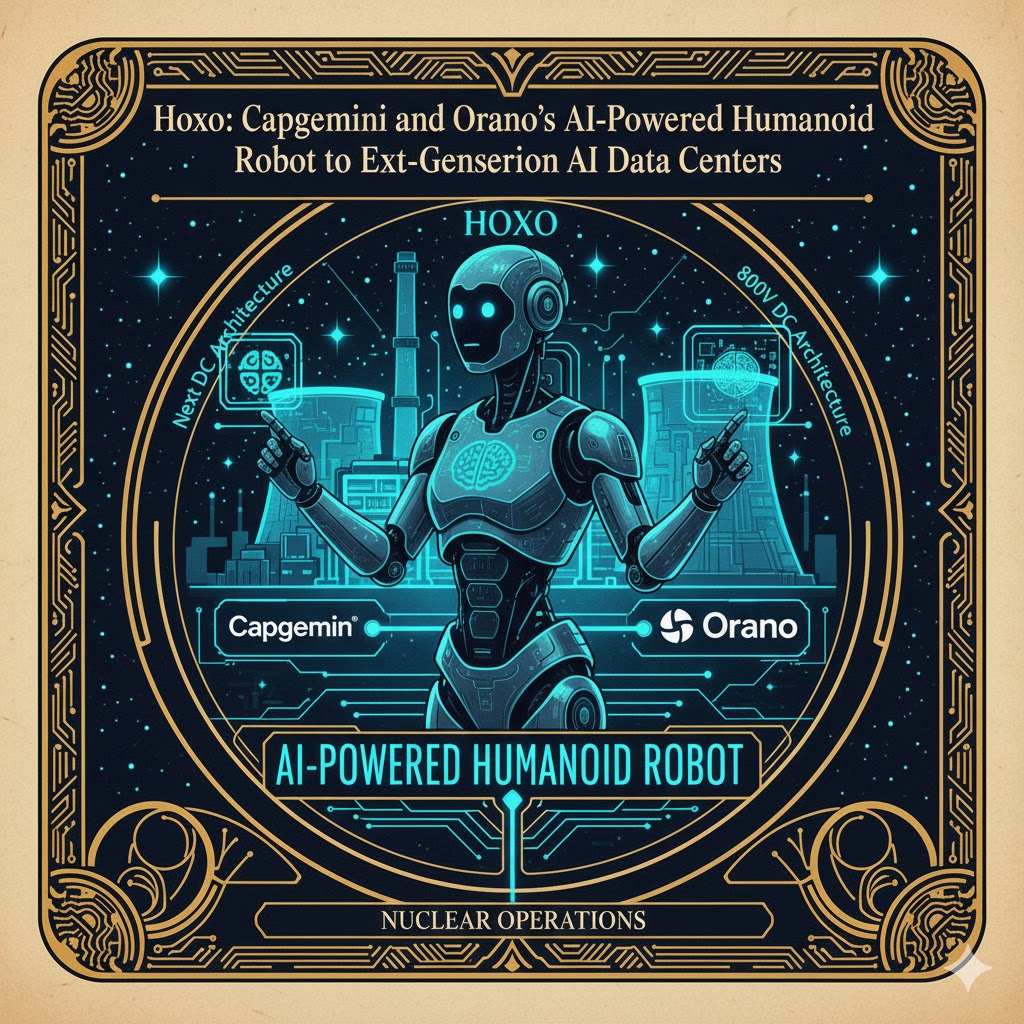Overview
On November 5, 2025, Capgemini and Orano unveiled Hoxo, the first intelligent humanoid robot designed for the nuclear sector. Deployed at the Orano Melox Ecole des Métiers in France’s Gard region, Hoxo is equipped with embedded AI, advanced sensors for real‑time perception, autonomous navigation and the ability to execute technical gesturescapgemini.com. Its purpose is to replicate human movements and operate alongside teams in nuclear facilities, including in challenging intervention environmentscapgemini.com.
Technical capabilities
- Embedded AI and sensors – Hoxo combines computer vision, digital‑twin technology and autonomous navigation. Its sensors provide real‑time perception, allowing it to move through tight spaces and perform precise tasks that would normally require human dexteritycapgemini.com.
- Testing and validation – Over a four‑month pilot phase, Orano Melox’s innovation teams will evaluate Hoxo’s mobility, precision and AI‑driven operationscapgemini.com. The goal is to validate the range of applications and determine how the robot can assist operators in day‑to‑day tasks.
- Human–robot collaboration – Capgemini’s AI Robotics & Experiences Lab designed Hoxo to work alongside humans. According to Pascal Brier, Capgemini’s Chief Innovation Officer, the project converges robotics, AI, computer vision and digital twins and “redefines human‑machine interaction in sensitive environments”capgemini.com. Sustainability Magazine notes that Hoxo’s ability to replicate human movements could prove valuable in hazardous intervention environmentssustainabilitymag.com.
Industrial implications
Safety improvements – Nuclear facilities are among the most stringent and hazardous industrial environments. By handling high‑risk tasks and entering radiological zones, humanoid robots can reduce human exposure to radiation and fatigue. Hoxo’s design allows it to perform maintenance or inspection tasks that would otherwise require custom tooling or multiple remote‑control systems.
Labour transformation – Introducing humanoid robots changes the labour mix. Fewer human workers will perform physically demanding tasks, while more will oversee robot operations, maintenance and exception handling. Training programmes will need to evolve to include robot programming, AI supervision and safety protocols.
Technological precedent – Hoxo is a proof of concept for “physical AI”. If the pilot proves successful, similar robots could be deployed in other high‑risk sectors such as chemical plants, aerospace manufacturing or deep‑sea exploration. Capgemini and Orano describe Hoxo as an agile, scalable platform intended to enhance industrial performance and provide robotic assistance to operatorscapgemini.com.
Perspectives from stakeholders
- Arnaud Capdepon, director of Orano Melox, said that Hoxo opens new perspectives by combining an ergonomic robotic solution with on‑site expertise and aims to enhance both safety and competitivenesscapgemini.com.
- Pascal Brier, Capgemini’s chief innovation officer, emphasised that the project pushes the boundaries of industrial automation and harnesses the potential of physical AI to address Orano’s most demanding challengescapgemini.com.
- Sustainability Magazine highlights that the testing phase will show whether humanoid robots deliver practical advantages over existing automation solutions and notes that the nuclear industry faces pressure to improve efficiency while maintaining stringent safety standardssustainabilitymag.com.
Conclusion
The deployment of Hoxo represents a bold step for the nuclear sector and for robotics. By blending AI, robotics and digital‑twin technology, Capgemini and Orano aim to create safer working conditions and improve operational efficiency. The pilot phase will reveal whether humanoid robots can deliver on that promise and open the door to broader adoption across high‑risk industries.









